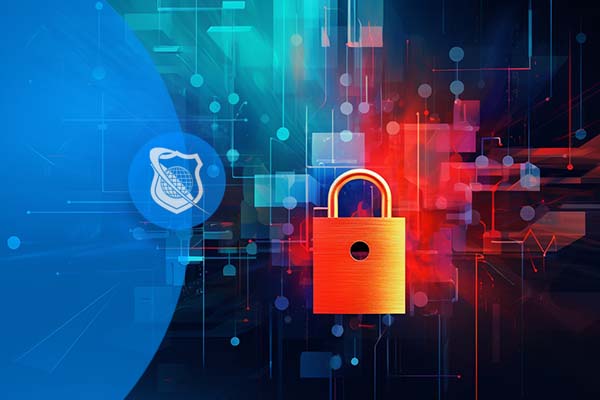In today’s rapidly evolving technological landscape, the concept of business continuity and disaster recovery (BCDR) has never been more critical. With the shift towards cloud computing, traditional methods of ensuring uninterrupted business operations and swift recovery from unforeseen events are undergoing significant transformations. This article, drawing on 20 years of experience in the field, will explore the nuances of BCDR in the cloud era, highlighting the strategies, tools, and best practices that can safeguard your organization’s vital assets.
Understanding Business Continuity and Disaster Recovery in the Cloud
Traditional vs. Cloud-based BCDR
Traditional BCDR
In the past, business continuity and disaster recovery (BCDR) were primarily focused on physical infrastructure. Organizations had to invest in redundant hardware, off-site storage, and complex manual processes to ensure that critical systems could be restored quickly in the event of a failure.
Key Components of Traditional BCDR:
- Redundant Hardware: Organizations needed to maintain duplicate systems and data centers to ensure availability.
- Off-Site Storage: Regular backups were stored in remote locations, requiring physical transportation and secure storage.
- Manual Processes: Recovery often involved manual intervention, leading to longer recovery times and increased risk of human error.
- High Costs: The need for physical infrastructure led to significant capital and operational expenses.
Lock In Our Lowest Price Ever For Only $16.99 Monthly Access
Your career in information technology last for years. Technology changes rapidly. An ITU Online IT Training subscription offers you flexible and affordable IT training. With our IT training at your fingertips, your career opportunities are never ending as you grow your skills.
Plus, start today and get 30 days for only $1.00 with no obligation. Cancel anytime.
Cloud-based BCDR
The advent of cloud computing has revolutionized BCDR. Cloud-based solutions offer flexibility, scalability, and cost-effectiveness, allowing businesses to implement robust BCDR strategies without the need for extensive physical infrastructure.
Benefits of Cloud BCDR
- Cost-Effective: By leveraging cloud resources, organizations can eliminate the need for physical hardware, reducing both capital and operational costs.
- Scalable: Cloud BCDR solutions can easily adapt to the changing needs of the business, allowing for seamless expansion or contraction as required.
- Automated: Modern cloud BCDR solutions offer automated backup and recovery processes, significantly reducing human error and recovery times.
- Global Reach: With data and systems hosted in the cloud, organizations can access their critical assets from anywhere in the world, ensuring uninterrupted business operations.
Challenges and Risks
While the benefits are substantial, cloud-based BCDR is not without challenges:
- Security Concerns: Ensuring data privacy and compliance with regulations like GDPR can be complex. Organizations must carefully select cloud providers with robust security measures and certifications.
- Dependency on Service Providers: The reliability of cloud BCDR depends on the service providers’ uptime and performance. Strong Service Level Agreements (SLAs) and regular monitoring are essential.
- Complexity: Integrating cloud BCDR with existing IT infrastructure requires careful planning and expertise. Misconfiguration or lack of understanding can lead to vulnerabilities.
Traditional vs. Cloud-based BCDR
The shift from traditional to cloud-based BCDR represents a significant evolution in how organizations approach continuity and recovery. While traditional methods provided a solid foundation, the flexibility, efficiency, and cost-effectiveness of cloud-based solutions make them an attractive option for modern businesses.
However, the transition to cloud BCDR is not without its challenges. Organizations must carefully assess their needs, select the right tools and providers, and ensure that they understand the complexities involved. By doing so, they can leverage the power of the cloud to enhance their BCDR strategies, safeguarding their critical assets and ensuring business resilience in an ever-changing technological landscape.
Cybersecurity Training Series – 15 Courses
Embark on a Thriving Cybersecurity Career! With our Ultimate Cyber Security training courses, you’ll dive into the world of ethical hacking, penetration testing, and network security. Our 15 comprehensive courses, led by industry experts, will equip you with essential Cybersecurity skills, setting you on the path to success in this ever-evolving field.
Strategies for Implementing BCDR in the Cloud
Implementing business continuity and disaster recovery (BCDR) in the cloud requires a strategic approach that encompasses risk assessment, tool selection, planning, and testing. Here’s a detailed look at these critical steps:
Assessing Risks and Needs
A successful BCDR strategy begins with a thorough assessment of the risks and needs of the organization.
- Identifying Critical Systems: Determine which systems and applications are vital to the organization’s operations and must be prioritized in the BCDR plan.
- Understanding Potential Threats: Analyze various threats such as cyberattacks, natural disasters, hardware failures, and human errors that could disrupt these critical systems.
- Evaluating the Impact of Downtime: Assess the potential financial, operational, and reputational impact of downtime on the organization. This helps in defining recovery objectives like Recovery Time Objective (RTO) and Recovery Point Objective (RPO).
Selecting the Right Tools and Technologies
Choosing the right tools and technologies is vital for implementing an effective BCDR plan.
- Selecting the Right Cloud Provider: Evaluate different cloud providers based on their reliability, security, compliance, and cost-effectiveness. Consider their support for BCDR-specific features.
- Choosing Backup Solutions: Identify the appropriate backup solutions that align with the organization’s RPO and RTO. This may include continuous backup, snapshot technologies, or hybrid solutions.
- Recovery Mechanisms: Determine the best recovery mechanisms, such as failover systems, that align with the organization’s recovery objectives.
Creating and Testing a BCDR Plan
A well-documented BCDR plan is essential for success.
- Creating a BCDR Plan: Outline the procedures for backup, recovery, communication, and more. Define roles and responsibilities, and ensure that all stakeholders understand their part in the plan.
- Regular Testing: Conduct regular drills and simulations to test the plan’s effectiveness. This ensures that all team members are prepared to execute it and identifies potential areas for improvement.
- Continuous Improvement: BCDR is not a one-time effort. Continuously monitor, review, and update the plan to reflect changes in the organization’s needs, technologies, and regulatory landscape.
Strategies for Implementing BCDR in the Cloud
Implementing BCDR in the cloud is a complex but essential task that requires careful planning, selection, and execution. By thoroughly assessing risks and needs, choosing the right tools and technologies, and creating and testing a robust BCDR plan, organizations can ensure that they are prepared to respond effectively to disruption
Case Studies: Success and Failure in Cloud BCDR
Real-world examples provide valuable insights into the successes and failures of cloud BCDR. These case studies highlight the importance of proper planning, execution, and continuous improvement.
- Success Story: A company that leveraged cloud BCDR to recover from a major cyberattack, minimizing downtime and financial loss.
- Failure Story: A business that failed to adequately test its BCDR plan, leading to extended downtime during a critical system failure.
ITU Online’s Program for IT Courses
In the complex world of BCDR, continuous learning and skill development are essential. ITU Online offers a comprehensive range of IT courses, including specialized training in business continuity and disaster recovery. This program provides:
- Customized Learning Paths: Tailored to meet the specific needs of IT professionals.
- Flexible Learning Options: Learn at your own pace, from anywhere.
- Certification Opportunities: Gain recognized certifications to enhance your career.
By engaging with ITU Online’s training program, you can ensure that your team has the skills and knowledge needed to implement and manage effective BCDR strategies in the cloud era.
Future Trends in Cloud BCDR
The landscape of business continuity and disaster recovery (BCDR) is constantly evolving. As technology advances and regulatory landscapes shift, organizations must stay ahead of the curve to ensure that their BCDR strategies remain effective and compliant. Here’s a closer look at some of the key trends shaping the future of cloud BCDR:
Emerging Technologies
- Artificial Intelligence (AI) and Machine Learning: AI and machine learning are being leveraged to predict potential failures and automate recovery processes. These technologies can analyze vast amounts of data to identify patterns and anomalies, allowing for proactive measures to prevent downtime.
- Blockchain: Blockchain technology offers a secure and transparent way to record transactions. In the context of BCDR, it can be used to ensure the integrity and availability of critical data, even in the event of a system failure.
- Edge Computing: As data processing moves closer to the source of data generation, edge computing is playing a vital role in BCDR. It enables faster response times and reduces the risk of centralized failure.
- Serverless Architectures: The rise of serverless computing allows for more flexible and resilient applications. By decoupling applications from underlying infrastructure, serverless architectures enhance the ability to recover from failures.
Regulatory Considerations
- General Data Protection Regulation (GDPR) and Other Data Protection Laws: Compliance with data protection regulations is a critical aspect of BCDR. Organizations must ensure that their recovery strategies align with legal requirements for data privacy and security.
- Industry-Specific Regulations: Different industries may have unique regulatory requirements that impact BCDR. For example, healthcare organizations must comply with HIPAA, while financial institutions may have specific requirements related to data retention and recovery.
- Global Regulatory Landscape: As businesses operate across borders, understanding and complying with international regulations becomes increasingly complex. A global approach to BCDR ensures that organizations meet the diverse regulatory requirements of different regions.
Integration of BCDR with Cybersecurity
- Unified Approach: The integration of BCDR with cybersecurity strategies is becoming more prevalent. A unified approach ensures that recovery plans consider not only system failures but also cyber threats and attacks.
- Threat Intelligence: Leveraging threat intelligence in BCDR planning helps organizations to understand and prepare for emerging cyber threats. This proactive approach enhances resilience against evolving cyber risks.
The future of cloud BCDR is dynamic and multifaceted. Emerging technologies are providing innovative ways to enhance resilience, while regulatory considerations are shaping the way organizations approach continuity and recovery. Staying abreast of these trends is essential for organizations seeking to safeguard their critical assets in an ever-changing technological and regulatory landscape.
Lock In Our Lowest Price Ever For Only $16.99 Monthly Access
Your career in information technology last for years. Technology changes rapidly. An ITU Online IT Training subscription offers you flexible and affordable IT training. With our IT training at your fingertips, your career opportunities are never ending as you grow your skills.
Plus, start today and get 30 days for only $1.00 with no obligation. Cancel anytime.
Conclusion
Business continuity and disaster recovery in the cloud era is a complex but essential aspect of modern business operations. By understanding the benefits, challenges, and strategies associated with cloud BCDR, organizations can safeguard their critical assets and ensure uninterrupted service. ITU Online offers a valuable resource for IT professionals seeking to stay ahead of the curve in this vital field. Engage with the training program today to enhance your skills and secure your organization’s future.
Cloud Era Business Continuity and Disaster Recovery FAQs
What is the importance of Business Continuity and Disaster Recovery in the cloud era?
In the cloud era, the importance of Business Continuity and Disaster Recovery cannot be overstated. As businesses increasingly rely on cloud services for their critical operations, the potential impact of service disruptions or data losses has grown significantly. BC and DR strategies ensure that businesses can maintain or quickly resume mission-critical functions following a disruption, minimizing downtime and financial losses.
How does cloud computing enhance Business Continuity and Disaster Recovery planning?
Cloud computing offers scalable and flexible resources that enhance Business Continuity and Disaster Recovery planning. It allows for the replication of data and applications across multiple geographically dispersed cloud servers, ensuring availability even in the event of a localized disaster. Moreover, cloud services can provide automatic failover mechanisms, reducing the recovery time objective (RTO) and recovery point objective (RPO) significantly.
What are the key components of a cloud-based Disaster Recovery plan?
A cloud-based Disaster Recovery plan typically includes:
Risk Assessment and Business Impact Analysis: Understanding potential threats and their impact on business operations.
Replication of Data and Applications: Ensuring that all critical data and applications are duplicated across multiple cloud environments.
Failover and Failback Procedures: Establishing processes for switching to a backup environment during a disaster and returning to the original environment after the issue is resolved.
Testing and Maintenance: Regularly testing the DR plan to ensure effectiveness and updating it according to any changes in the business or IT environment.
How do I choose the right cloud provider for Business Continuity and Disaster Recovery?
Choosing the right cloud provider for Business Continuity and Disaster Recovery involves evaluating several factors:
Compliance and Security: Ensure the provider meets industry standards and regulations relevant to your business.
Service Level Agreements (SLAs): Look for SLAs that guarantee uptime, RTO, and RPO that align with your business requirements.
Geographical Diversity: Consider providers that offer data centers in different geographical locations to mitigate the risk of regional disasters.
Support and Expertise: Evaluate the provider’s support services and their experience in handling BC and DR.
What are the common challenges of implementing Business Continuity and Disaster Recovery in the cloud and how can they be overcome?
Implementing BC and DR in the cloud can present challenges such as data security concerns, managing complex cloud environments, and ensuring compliance with regulatory requirements. These challenges can be overcome by:
Conducting thorough due diligence on potential cloud providers to understand their security measures and compliance capabilities.
Leveraging cloud management tools and services to simplify the management of resources and ensure visibility across cloud environments.
Regular testing and updating of BC and DR plans to ensure they remain effective as cloud environments and business needs evolve.












